1/48 Hasegawa Ki-27 Nakajima Type 97 “Nate” 77th Sentai
This article is part of a series:
Tonight's posting will quite probably be my last "new" article for the year. It follows hot on the heels of my other Ki-27 article that was posted last night.
John Clark inspired me to finish both of these kits up when he posted his excellent Hasegawa Ki-27 here on Imodeler a short time ago. So if you're reading this John, thanks again !
I had originally planned on building up a few of the new Airfix 1/48 P-40B models, but ran out of time due to various reasons. The plan was to use the Eagle Editions EC#30 decal set for the Flying Tigers A.V.G. that I have in the stash. One plane was to be built in the markings of "Pappy" Boyington's plane (#21), and the other was going to be built as a plane that Dick Rossi flew, which was (#3).
I had the pleasure of meeting and talking with Dick Rossi years ago at a local seafood restaurant for about an hour. He was a very nice man. So this was going to be a tribute build to him as well...
Which brings us to the story behind this particular Ki-27 that I built my model as... which just so happened to have been damaged in aerial combat by the pilots flying with the AVG. It was going to be a "victor and vanquished" type theme for the builds.
Luckily for us history buffs, "LIFE" magazine was there in Burma, doing a wartime article about the AVG. Here are some of the pilots from the article... Some may look familiar to you.
The photographer who took these original photos was named George Rodger, and these pictures were published in the March 30, 1942 edition of "LIFE" magazine.
Once I saw this picture shown below, and read the caption with it, I just knew that I had to build this plane to go along with the two P-40 builds.
Apparently the Japanese pilot flying the damaged Ki-27 tried to crash his plane into a RAF Blenheim bomber. The pilot missed the bomber by a few feet. The Ki-27 did not go up in flames, which is what allowed us the opportunity to have these extraordinary photos...
The remains of the Ki-27 "Nate" were moved away from the impact area.
In this photo you can barely make out the serial number. It's a three digit number located at the base of the fin just ahead of the rudder, and I think it's number "842"
Here you can see "Pappy" Boyington (on the left wearing sunglasses)
Soon afterwards, the rudder assembly was removed...
and various photos were taken with members of the AVG posing with the trophy...
This picture shown below is one you often find online. It has been cropped from the original shown above...
In this picture shown below, you can see an AVG pilot standing next to two different Ki-27 rudders... notice how the colors on the stripes and the 77Th Sentai markings look a little different... Here we have photographic proof that at least two rudders were removed from downed Nate's
This picture shows the location of the stripes on the sides of the fuselage and fin.
Which allowed me to get a good idea as to how they should be applied on the model.
The next question I had was "What colors were the stripes ?"
This is where I was extremely lucky and found a few color photos online of the actual relic. The rudder / fin stripes were yellow, and the "Stylized" seagull emblems representing the 77th Sentai were blue !
It was stated that this particular rudder was brought back to the US strapped to a foot locker... Notice the slightly different shades of blue. I'm guessing this was due to the paint fading out some over the years, and it could also be an effect of the lighting when the pictures were taken...
Now I could build an accurately marked plane... I was very stoked to say the least.
It seems that there were three rudders from various planes removed from Ki-27 Nate's that were downed by the AVG pilots. Two remain in private collections, while one is in the "Planes of Fame" museum if the internet sources are correct.
Even though many pilots who flew with the American Volunteer Group thought they were fighting Japanese A5M Claude's and A6M Zero's, in all probability they were coming up against Ki-27 Nate's (which look like A5M's with fixed landing gear) and Ki-43 Oscars (which would resemble a Zero in the heat of battle).
So here are some pictures of the second Hasegawa Ki-27 Nate that I built recently. The other one was posted last night and can be seen here.
If you're interested in how I built these two, please follow this next link to the build log.
I hope you enjoyed reading this and looking at the pictures as much as I did building these models and doing the research work behind the scenes. For me sometimes doing the research is almost as fun as gluing and painting !
If you have one of the Hasegawa Nate's in your stash, build it ! They are a great little kit and go together well. This one used no filler at all. The only weak points are the canopy. But this is a kit that was originally produced by a company called Mania back in the 1970's. It still holds up rather well in my opinion. Hasegawa ended up with the molds when Mania went out of business. Hasegawa also hired some of the Mania employees and the rest is history... On occasion the kit is re released by Hasegawa with a different set of decals.
The "twin" Airfix P-40 builds are still in the works. I have a few other projects that need finished up first. So please stay tuned and I'll get them done when time permits.
Take care and I wish you all a very Happy New Year.
Live long and prosper...
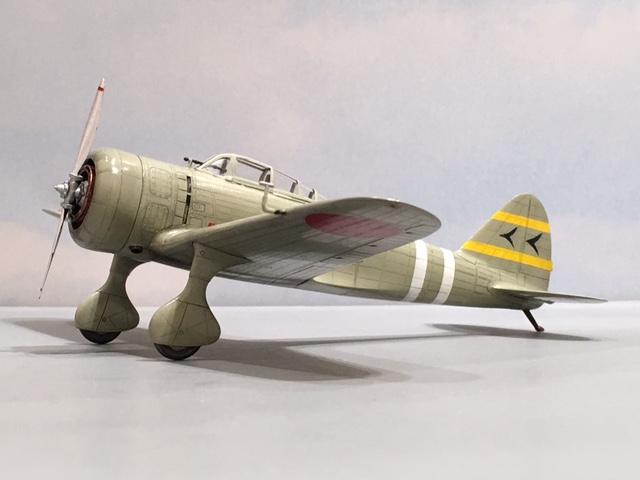
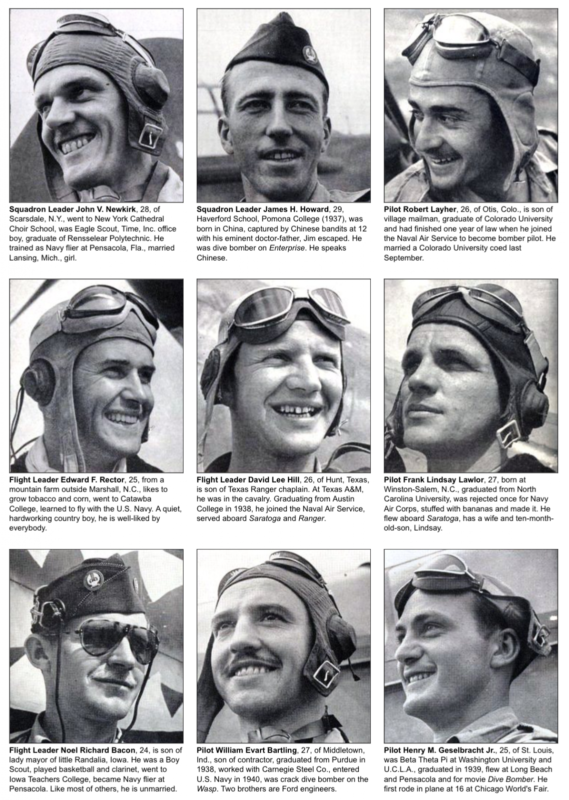
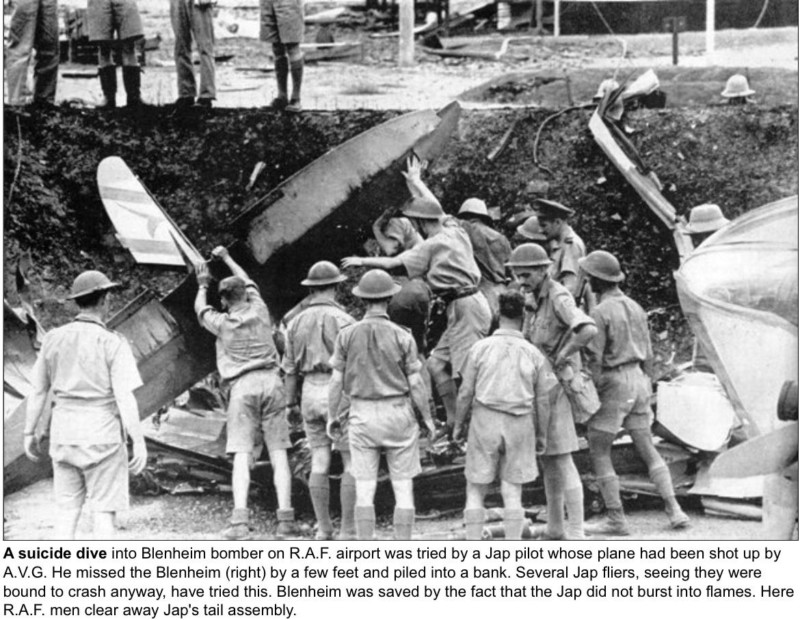
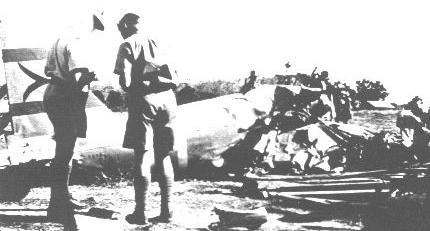

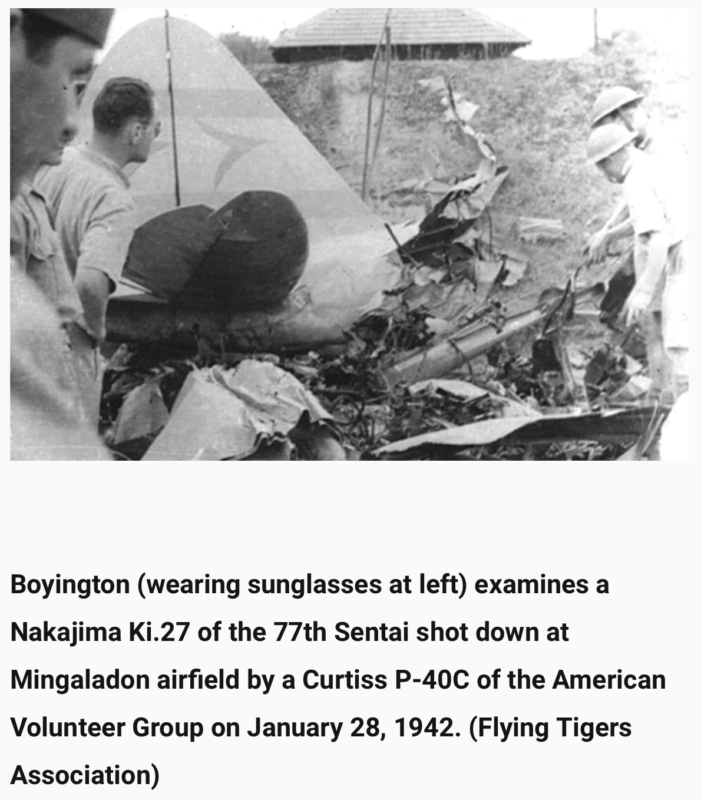
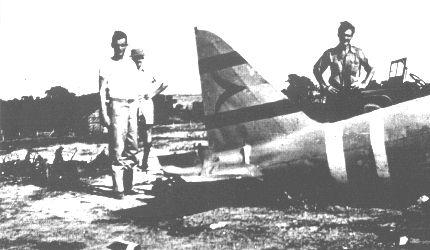
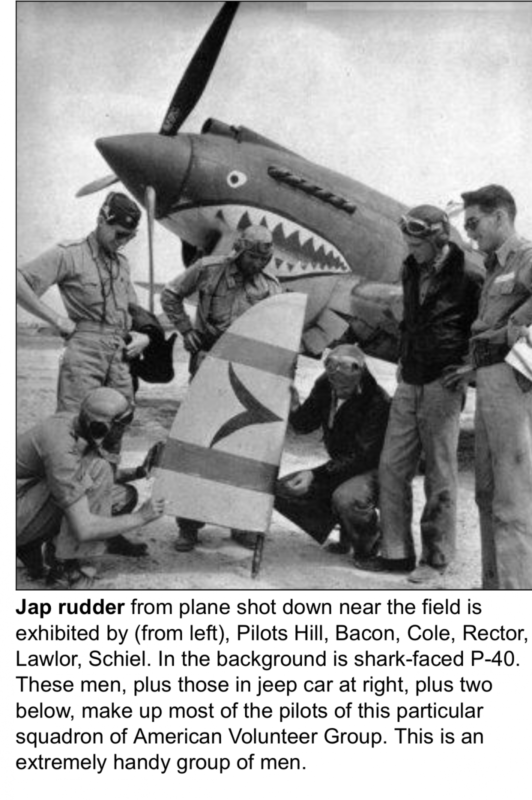
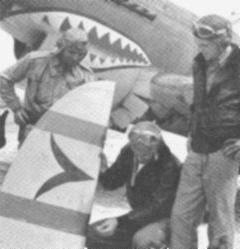
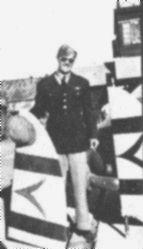
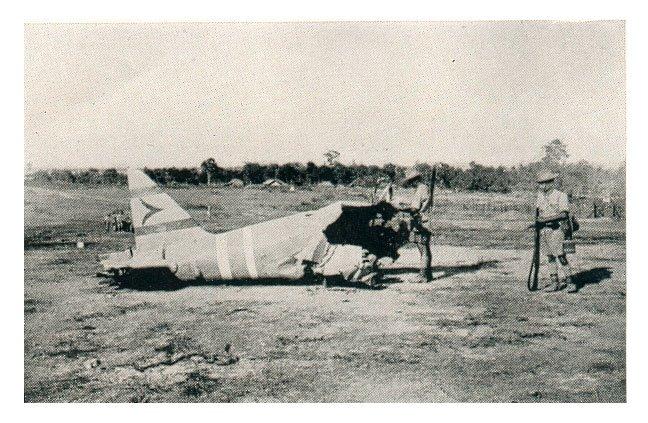
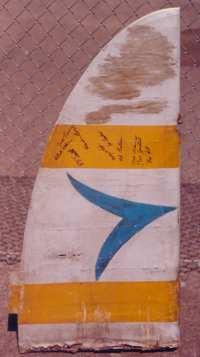

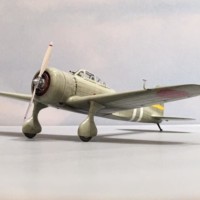

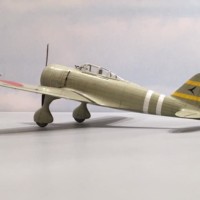

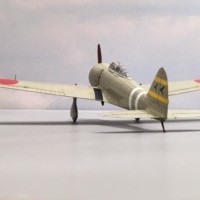

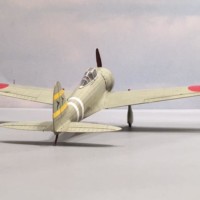

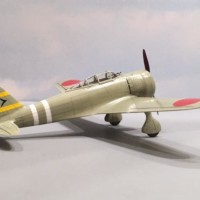
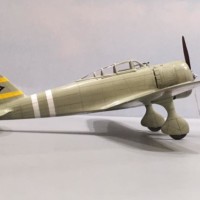
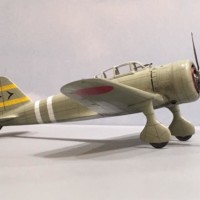
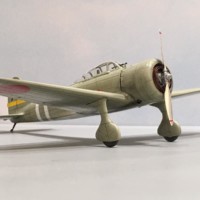
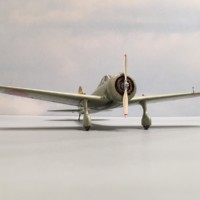

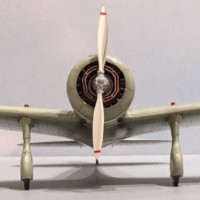
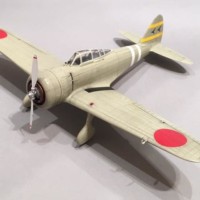
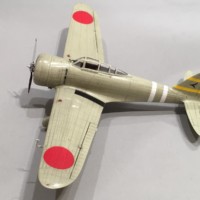
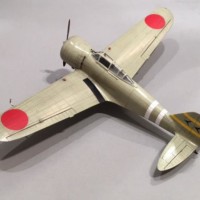
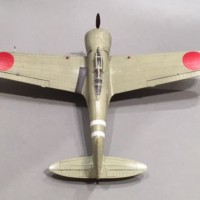
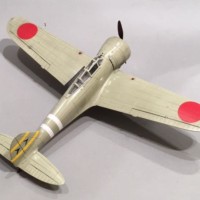
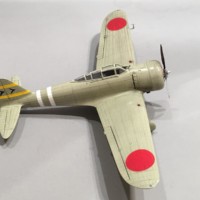
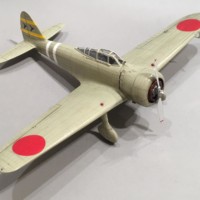
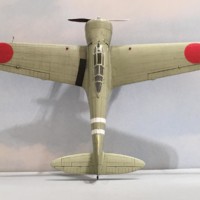


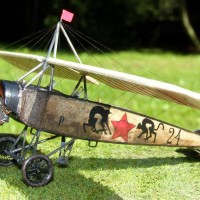
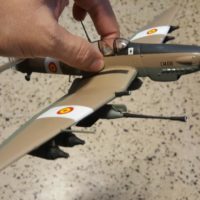

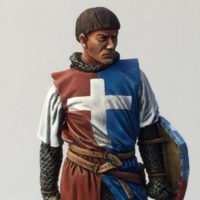
Wow, another fine Nate. Nice work, Louis.
Thanks John for the compliments... Happy New Year my friend.
Same to you, my friend. What's next on your bench?
Currently I have 4 Hasegawa F6F Hellcats for the "Year of the Cat" GB, a single Amtech P-40 long tailed "L" version, a Tamiya M-4 Sherman early version, Tamiya Panzer Mk III L, all for the "Kasserine Pass" GB, 4 Tamiya FW-190 A3's (of which one will be modified to an A4 for the "Kasserine Pass"). All of the aircraft are 1/48 scale, while the armor is 1/35th.
Most of these builds are very close to being completed.
You might just have saved the best until last - this is probably my favourite of your recent builds - what a great job with basically a one-coloured plane! You should be very proud of this Louis, it is excellent!
Thank you very much Paul. This is my first time using an oil wash. I wanted to do something that would help bring the monotone color to life... Happy New Year my friend !
Nice "backstory", nice photos and a nice build to boot...it looks (at least to me) a little 'strange' to see no national insignia on the fuselage, though.
Thanks Craig ! It does take a little getting used to seeing this one without fuselage Hinomaru markings. Typically the Ki-27 Nate's and Ki-43 Oscar's used in the CBI theater were like this. Take care buddy and Happy New Year.
Great article and model images, Louis.
Thanks Rob ! My plans are to build a photography light box soon. I hope this will help to eliminate the shadows in the pictures. Take care and Happy New Year !
Very nice work again, Louis, you definitely have your own recognisable style, like a few others on this site. Great end of year build, looking forward to seeing lots more in 2018.
Thank you my friend for the kind words. I hope that we all have a very productive 2018 ... We have some very good ideas going on here for new Group Builds coming up soon. (The Kasserine Pass, 100 Years of the RAF). Plus the Year of the Cat will be winding down. Good times ! Happy New Year my friend...
Love the back round story (inspiration) and photos Louis. The one thing I've noticed about the rudder is that everything was hand painted. The fuselage stripes were hand painted too. Which is to say they are not perfect and printed on a Alps printer or produced by Carto graph. Given the scale, we modelers in our pro suit of perfect make things look pretty darn good. When in reality the real thing was a metal canvas hand painted with some imperfections. Looking forward to those P-40s.
Thanks Stephen. I noticed the "seagulls" representing the 77th Sentai were not the same. So I masked them off and sprayed them. Then I went back with a pint brush and gave them a few strokes with the paint brush to replicate the "hand painted" look. If you notice the white fuselage stripes are not the same width too. The rear one is a tad bit wider... I did the same with the model.
You are spot on with your comments. Thank you.
The P-40's are getting closer to the top of the build pile... so please stay tuned.
Beautiful Bird Louis, great story too. This is what modeling is all about: honor history while enjoying your hobby!
Thanks Michel. We think alike with the three "H's". Honor, History and Hobby. Take care my friend and have a Happy New Year.
Great article and a great kit too. Well done.
Thank you very much.
Another great build, Louis, and an equally great story!
Thanks Robert for the compliments. Happy New Year buddy.
That kit always makes up nice. Hard to believe it's 45 years old! But Mania (who originally produced it) were the guys who became the "game changers" of modeling once the company went out of business and they were hired by Hasegawa. Your treatment of it is very good and I really like the choice of 77th Sentai.
According to the AVG guys, they all shot down Zeros (even though the IJN never came closer to Burma than 1,500 miles!), and if you tried to explain to them they were fighting the JAAF and were shooting down Nates and Oscars, you could end up in trouble. But then when you'd get them talking in an interview, they'd say matter of factly "And then I shot down that Oscar... " to which the smart interviewer said nothing. (Especially if that was coming from the always-formidable Judge Charles Older).
Very interesting how the majority of them (and the vast majority of the guys who scored better) were USN/USMC, but then the Navy taught gunnery, something the USAAC didn't do till 1943.
I was very impressed with how it fit together, and how nice the surface details were. (especially when you consider the age of the molds)... Once I saw this picture of a 77th Sentai plane, it fit perfectly in with my "Flying Tigers" build theme. I was hooked and knew I had to build it right then and there...
I have read that where the AVG pilots were all claiming Zeros, when in all probability they were downing Oscar's. This was probably a combination of various things...
Such as the Zero was more famous at the time and the Oscar was lesser known. Then add in the fact that the Japanese were shooting back, often violently maneuvering while doing so. Add this with the time these planes were actually visible to the pilots of the AVG, (which often was mere seconds).
I'm sure these circumstances took away from the recognition factors.
I wonder how well Richard Bong and Tommy McGuire would have done if they had gunnery school earlier in their careers ? If you look in the picture close to the top, where it has 9 AVG pilots, they were all USN or USMC pilots...
Thanks again Tom and Happy New Year .
Very interesting story supported by many photos and closed in a very nice model, I like it
Thank you for the compliments and for "liking" the article too Krzysztof. Happy New Year !
A nice partner to the other Nate, and some great backstory. Thanks - and Happy New Year!
Happy New Year to you Greg ! (and thanks for the compliments buddy...). I like to include some history with the built model presentation when I can. Having photographs is like icing on the cake, and who doesn't like icing ?
My built Japanese plane collection is slowing growing. Maybe next year I can help it grow some more...
I have a certain Tamiya Ki-61, and a few Ki-46's and a few Gekko's calling my name... rather loudly. Then I pulled out a few Hasegawa Ki-45 "Nick's" from the stash, and they are sitting on the build pile now too... 2018 is looking good for twin engine planes at the "Iron Works"...
Thanks again my friend...